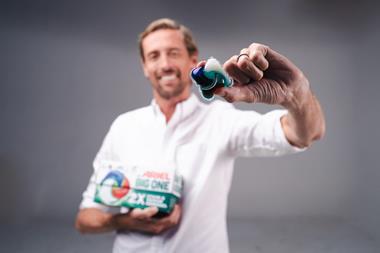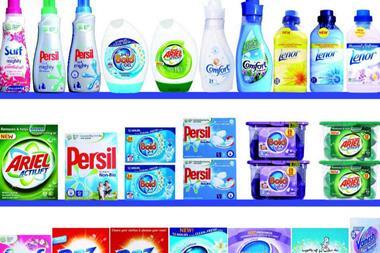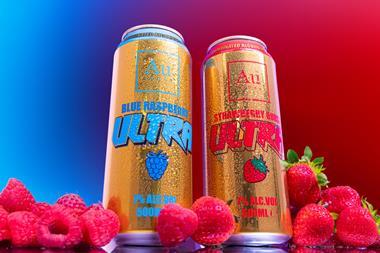Procter & Gamble may meet earnings estimates for the year, but clinging on to margins to secure profits is not doing much for top line growth, warned analysts after the consumer products giant released its second quarter results this week.
Net profits for the quarter ended December 31 were up 6% to $1.19bn, but sales dropped 4% to $10.18bn. Unit volume fell 2%.
Sales were down in four of P&G's five divisions, and chief executive Alan Lafley warned full year sales growth would be closer to 2-4% rather than the 4-6%.
Full year earnings estimates remained in place.
"They're losing volumes in almost every category, so putting up prices is not going to drive sales," said one analyst. "Perhaps in previous years they were too focused on the top line, but you have to strike a balance."
Although the euro is edging up against the dollar, the price of raw materials is still rising, representing an ongoing pressure on margins. But most observers felt P&G's long-term plans to focus on its 10 leading brands were sound.
Both P&G and Unilever have engaged in comprehensive restructuring and streamlining exercises, shedding non core brands and focusing marketing spend on a select few.
But Lafley admitted that where prices hikes introduced by P&G to cope with rising costs were not matched by competitors, it had lost market share.
Lafley added: "Price increases in laundry and babycare in the US look like they're sustainable, but in Europe we're taking down the price of laundry tablets and strengthening Pampers' consumer and trade promotions to be more competitive."
A spokesman confirmed P&G was now looking at making "price adjustments" on sanitary protection products to remain competitive.
Partially rolling back an earlier price increase on Bounty paper towels had "immediately improved sales" in November, he added.
P&G's top brands include Pampers, Pantene, Sunny Delight, Pringles and Ariel.
{{NEWS }}
Close menu
- Home
- Retail & Wholesale
-
Products & Suppliers
- Back to parent navigation item
- Products & Suppliers
-
Product Categories:
- Back to parent navigation item
- Product Categories:
- Alcoholic drinks
- Bakery
- Cereals & breakfast
- Cheese
- Chicken & poultry
- Chocolate
- Confectionery
- Crisps, nuts & snacks
- Dairy
- Fish
- Fresh produce
- Frozen
- Household
- Meat
- Own Label
- Sauces & condiments
- Seasonal
- Soft drinks
- Vaping
- Vegan & plant-based
- World foods
- Suppliers
- People
- Reports & Data
-
Topics A-Z
- Back to parent navigation item
- Topics A-Z
-
Popular topics:
- Back to parent navigation item
- Popular topics:
- Cost of living crisis
- Crime
- Deposit Return Schemes
- Finance
- Government & Regulation
- Health
- Inflation
- Loyalty
- Marketing
- Mergers & Acquisitions
- New Product Development
- Sourcing
- Supply chain
- Sustainability & environment
- Technology
- Ultra Processed Foods
- Vaping
- A-Z all topics
- Content by type:
- Events
- Ask iA (beta)
- Subscribe now
Sign in to comment on this article
Not logged in before? Register for FREE guest access today.
You will be able to:
- Read more stories
- Receive daily newsletters
- Comment on stories
Advert


















No comments yet